|
Notes: West Leigh was situated on the 8-mile Bolton & Leigh Railway (B&L) which was the first public railway to open in Lancashire. The line was authorised on 31 March 1825 and ran from the important manufacturing town of Bolton to the Leigh Branch of the Leeds & Liverpool Canal at Leigh and Bedford. Engineered by George Stephenson the line opened on 28 August 1828 for goods services only. On 5 May 1826 the Liverpool & Manchester Railway (L&M) was authorised and its route passed through Kenyon which was only 2½ miles to the south of Leigh. Both the L&M and the B&L were keen to have a connection between the two lines and to bring this about a separate company, the Kenyon & Leigh Junction Railway (K&LJR) was created. A 2½-mile connecting line was authorised on 14 May 1829. The L&M opened to passengers on 15 September 1830 and was an immediate success. Less than a year later on 2 June 1831 the K&LJR opened.
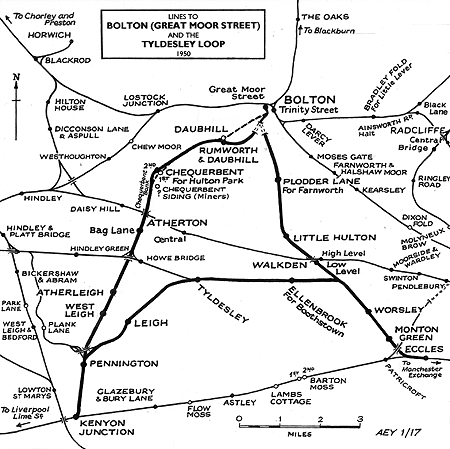 A passenger race day excursion from Bolton to Newton ran over the line on 2 June 1831 and public passenger services began on 13 June 1831. A passenger race day excursion from Bolton to Newton ran over the line on 2 June 1831 and public passenger services began on 13 June 1831.
West Leigh was opened as Leigh when the public service was introduced. Located to the north of Twiss Lane (the modern day A578) the station was very basic consisting of a simple cottage style building on the east side of the line which was at that time single track. The canal was a ¼ mile to the south and at that location there were transhipment facilities (that being the point at which the B&L line had had its southern terminus until the K&LJR had opened).
At the time of opening Leigh station had two trains in each direction which ran between Bolton Great Moor Street and Liverpool Crown Street. Within a couple of years there were also services to Manchester.
On 4 July 1837 the Grand Junction Railway (GJR) opened between Newton (on the L&M) and Birmingham. The opening of the GJR put the Bolton line and its stations within reach of the midlands and a year later following the opening of the London & Birmingham Railway (L&B) on 9 April 1838 within reach of the capital.
 The B&L and K&LJR companies allowed contractors to run trains on their lines. One such contractor was John Hargreaves Jnr. He started to run passenger excursions from Bolton to Liverpool on Sundays in 1841. The services would have called at Leigh. In 1843 John Hargreaves Jnr started to run excursions to London. The B&L and K&LJR companies allowed contractors to run trains on their lines. One such contractor was John Hargreaves Jnr. He started to run passenger excursions from Bolton to Liverpool on Sundays in 1841. The services would have called at Leigh. In 1843 John Hargreaves Jnr started to run excursions to London.
On 8 August 1845 the B&L, K&LJR and the L&M merged into the GJR. A year later on 16 July 1846 the GJR merged with the L&B to form the London & North Western Railway (LNWR).
The March 1850 timetable showed seven up (Kenyon direction) and eight down (Bolton direction) services on Monday-to-Saturday.
The station was renamed West Leigh on 1 August 1876.
During the 1880s the LNWR made improvements to the line. They included the creation of diversions to two inclined planes (at Chequerbent and at Daubhill), the rebuilding of Bolton Great Moor Street station and the creation of a double-track route. The line through West Leigh (between Pennington Junction and Atherton Junction) became double track on 31 May 1880.
West Leigh was also improved at this time. The main facilities were still on the up side of the line. They were housed in a brick single-storey building whose hipped roof was carried forward on a series of pillars to shelter the platform. On the down (Bolton-bound) platform a smaller, enclosed single-storey brick building, also with a hipped roof, provided shelter for passengers.
 A footbridge located at the north end of the station provided a connection between the platforms and it also carried a public right of way over the line. A footbridge located at the north end of the station provided a connection between the platforms and it also carried a public right of way over the line.
The station had a goods siding which was located to the rear of the up platform.
The December 1895 timetable showed ten up and eight down services on Monday-to-Saturday with no trains on Sunday.
By July 1922 there were eleven up and nine down trains on Monday-to-Friday. An extra down train ran on Saturday. No Sunday services had been introduced.
On 1 January 1923 the LNWR was merged with other companies to form the London, Midland & Scottish Railway (LMS). The LMS summer timetable for 1932 showed 16 up and 15 down trains on Monday-to-Friday as seen in the table below. On Saturday there was an extra down train but no trains ran on Sunday.
Up trains Summer 1932 |
Destination |
Down trains Summer 1932 |
Destination |
7.04am |
Warrington Bank Quay |
6.51am |
Bolton Great Moor Street |
7.53am |
Kenyon Junction |
7.41am |
Bolton Great Moor Street |
8.43am |
Warrington Bank Quay |
9.03am |
Bolton Great Moor Street |
10.24am (Saturdays excepted) |
Warrington Bank Quay |
10.00am |
Bolton Great Moor Street |
10.29am (Saturdays Only) |
Warrington Bank Quay |
11.05am |
Bolton Great Moor Street |
10.48am |
Liverpool Lime Street |
12.03pm |
Bolton Great Moor Street |
11.27am (Saturdays excepted) |
Kenyon Junction |
12.29pm (Saturdays Only) |
Bolton Great Moor Street |
12.17pm |
Kenyon Junction |
1.08pm (Saturdays excepted) |
Bolton Great Moor Street |
12.52pm (Saturdays Only) |
Liverpool Lime Street |
1.23pm (Saturdays Only) |
Bolton Great Moor Street |
2.08pm |
Kenyon Junction |
2.01pm |
Bolton Great Moor Street |
3.52pm |
Warrington Bank Quay |
4.46pm |
Bolton Great Moor Street |
4.39pm |
Warrington Bank Quay |
5.35pm |
Bolton Great Moor Street |
5.22pm |
Kenyon Junction |
6.03pm |
Bolton Great Moor Street |
6.07pm (Saturdays Only) |
Kenyon Junction |
7.06pm |
Bolton Great Moor Street |
6.12pm (Saturdays excepted) |
Kenyon Junction |
8.21pm |
Bolton Great Moor Street |
7.17pm |
Kenyon Junction |
8.51pm (Saturdays excepted) |
Bolton Great Moor Street |
8.47pm |
Warrington Bank Quay |
10.33pm |
Bolton Great Moor Street |
9.24pm (Saturdays excepted) |
Warrington Bank Quay |
11.31pm (Saturdays Only) |
Bolton Great Moor Street |
9.52pm (Saturdays Only) |
Kenyon Junction |
|
|
11.03pm |
Earlestown |
|
|
During the Second World War passenger services were reduced and they never returned to their 1930s levels. The LMS summer timetable for 1947 showed eight up and seven down Monday-to-Friday services. There were one extra up and two additional down trains on Saturdays. No trains called at West Leigh on Sunday. The first train was a down service for Bolton Great Moor Street which departed at 6.46am. The last train was also a down service to Bolton which departed at 9.15pm.
On 1 January 1948 the line became part of British Railways [London Midland Region] (BR[LMR]).
 The 1953 summer timetable showed seven up trains Monday, Wednesday and Friday. There were eight up trains on Tuesday and Thursday and ten on Saturday. In the down direction there were six trains on Monday, Wednesday and Friday. On Tuesday and Thursday there were seven trains and on Saturdays, nine. The 1953 summer timetable showed seven up trains Monday, Wednesday and Friday. There were eight up trains on Tuesday and Thursday and ten on Saturday. In the down direction there were six trains on Monday, Wednesday and Friday. On Tuesday and Thursday there were seven trains and on Saturdays, nine.
BR[LMR] closed West Leigh station to regular passenger services on 27 March 1954.
For several years after formal closure, the station was used for holiday excursions and for rugby specials for the nearby Leigh RLFC ground at Hilton Park.
Goods services continued to pass through West Leigh station until 17 June 1963 when the section of line between Pennington and Howe Bridge North Junction closed completely. The line had been lifted by 1965.
The course of the line was lost under Atherleigh Way which was built in the 1970s. The only indication of the existence of a former railway is the nearby Railway Hotel.
Tickets from Michael Stewart and route map by Alan Young.
See also: The Bolton & Leigh Railway
To see the other
stations on the Bolton Great Moor Street - Kenyon Junction line
click on the station name: Kenyon
Junction, Pennington,
Atherleigh,
Atherton
Bag Lane, Chequerbent
1st, Chequerbent
2nd, Daubhill 1st,
Rumworth
& Daubhill & Bolton
Great Moor Street
|

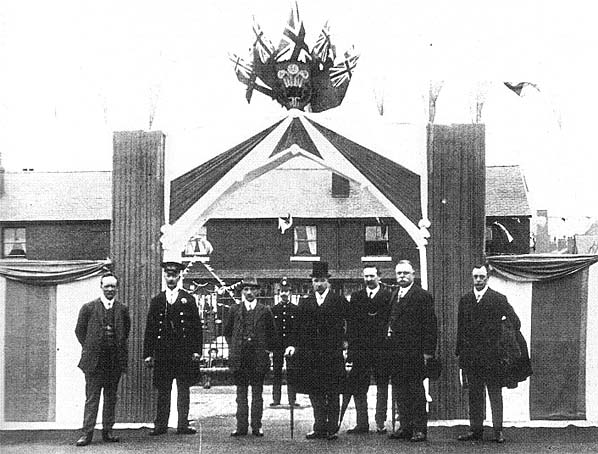
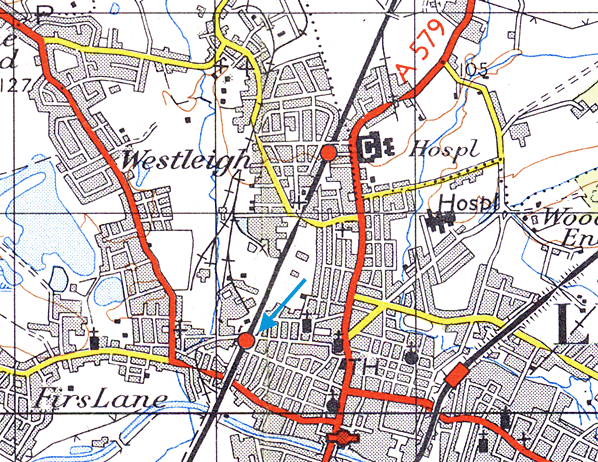
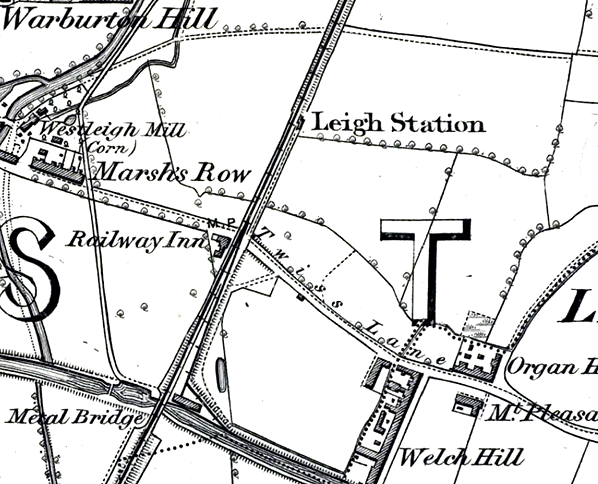
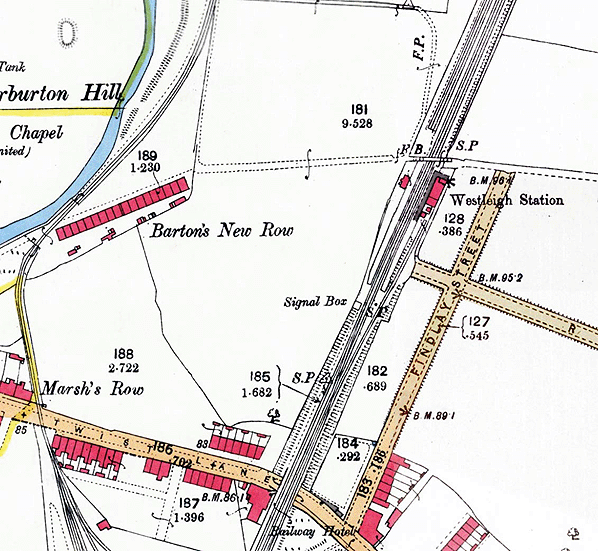
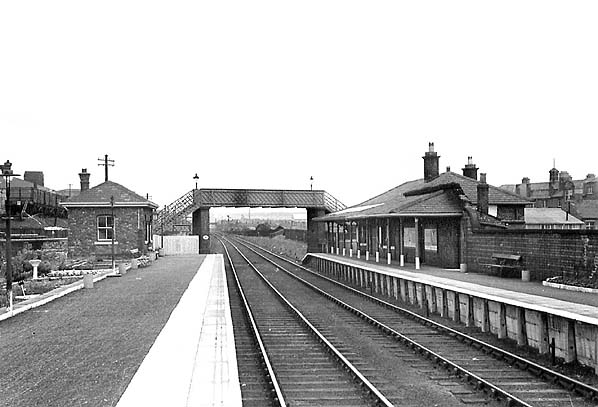
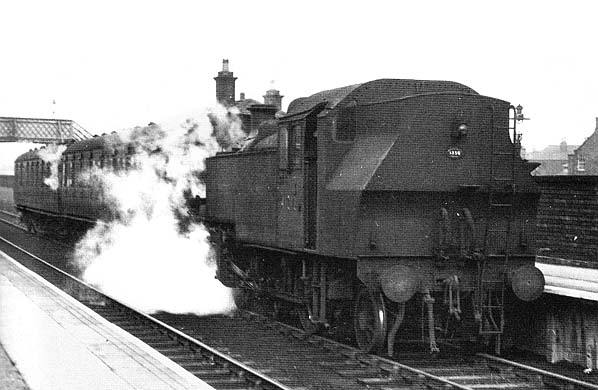
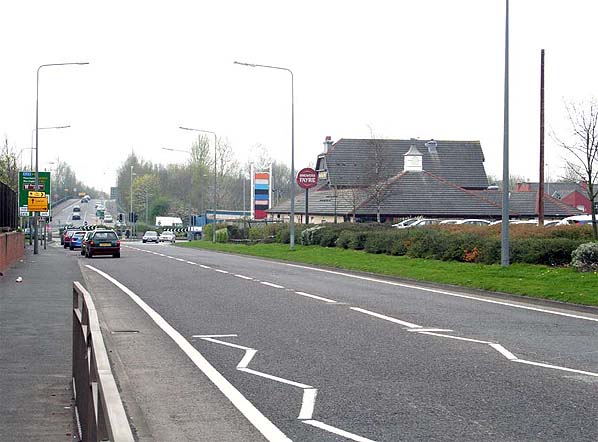
 Home
Page
Home
Page
 A passenger race day excursion from Bolton to Newton ran over the line on 2 June 1831 and public passenger services began on 13 June 1831.
A passenger race day excursion from Bolton to Newton ran over the line on 2 June 1831 and public passenger services began on 13 June 1831.  The B&L and K&LJR companies allowed contractors to run trains on their lines. One such contractor was John Hargreaves Jnr. He started to run passenger excursions from Bolton to Liverpool on Sundays in 1841. The services would have called at Leigh. In 1843 John Hargreaves Jnr started to run excursions to London.
The B&L and K&LJR companies allowed contractors to run trains on their lines. One such contractor was John Hargreaves Jnr. He started to run passenger excursions from Bolton to Liverpool on Sundays in 1841. The services would have called at Leigh. In 1843 John Hargreaves Jnr started to run excursions to London.  A footbridge located at the north end of the station provided a connection between the platforms and it also carried a public right of way over the line.
A footbridge located at the north end of the station provided a connection between the platforms and it also carried a public right of way over the line.  The 1953 summer timetable showed seven up trains Monday, Wednesday and Friday. There were eight up trains on Tuesday and Thursday and ten on Saturday. In the down direction there were six trains on Monday, Wednesday and Friday. On Tuesday and Thursday there were seven trains and on Saturdays, nine.
The 1953 summer timetable showed seven up trains Monday, Wednesday and Friday. There were eight up trains on Tuesday and Thursday and ten on Saturday. In the down direction there were six trains on Monday, Wednesday and Friday. On Tuesday and Thursday there were seven trains and on Saturdays, nine. 

